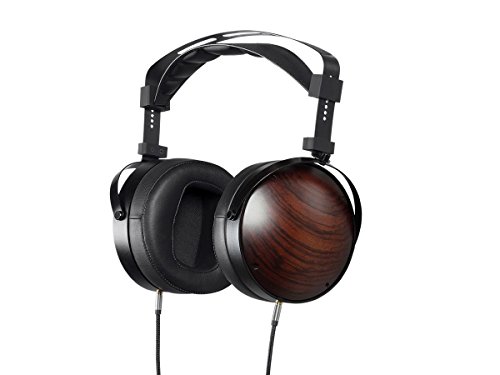Planar Magnetic Vs Dynamic Driver Headphones
The majority of headphones and IEMs utilize dynamic drivers that use a cone to move back and forth, creating sound waves. Planar magnetic headphones feature a flat diaphragm. They are more expensive, but they offer better sound and clarity.
 They might not work for portable use because they require more power. The ‘punch,’ or slam, comes from this. For those who are audiophiles, they’re an improvement.
They might not work for portable use because they require more power. The ‘punch,’ or slam, comes from this. For those who are audiophiles, they’re an improvement.
The Basics
Planar Magnetic Drivers have become an essential feature in headphones due to their crisp sound and high-quality. While they aren’t as common as dynamic drivers, you can find big-name companies such as Audeze and Oppo that sell the best Planar Magnetic Headphones. planar closed back headphones Magnetic Headphones are a bit different from traditional driver headphones since they don’t employ a moving voice coil to generate vibrations within the diaphragm. Instead, the driver’s charged area is distributed across the flat surface, allowing for more uniform motion.
A simpler mechanism allows the planar magnet driver to be more efficient in generating sound waves. This can result in higher distortion levels, a better response to the transients of music, and an overall more natural soundstage.
There are many advantages for choosing headphones that have a planar magnet drive. However, you must be aware of some limitations. First, you should be aware that these types of headphones typically leak more sound than normal open-back dynamic models. The diaphragm that is flat on planar magnetic headphones will push sound in both directions. In the end, sound waves will leak from the ear cups to your surroundings. This is something you should take into consideration if you’ll use your headphones in public areas or at the office.
Another issue is that planar magnetic headphones often require more power to achieve their full potential than other headphone designs. They require more power to move their huge, thin diaphragms, and as a result they are a little larger and heavier. This is a drawback when you want to keep your headphones portable and lightweight.
Planar magnetic headphones may not be as powerful or slam some listeners desire. This is because the diaphragm’s flat shape doesn’t vibrate in a pistonic manner like traditional dynamic headphones, and thus isn’t as ‘plucked’ as listeners might wish for. However, this is not a universally held opinion and there are a few high-end planar magnetic headphones (like the HiFiMAN Sundara) that provide excellent image distribution and punch.
If you’re willing to overlook these concerns, and are in the market for a headset that has a unique soundstage and unsurpassed clarity and sound quality, then planar magnetic headphones are definitely worth considering. Just make sure to consider the additional costs and power requirements, as well as their size and weight, before making a purchase. The good news is that there are now numerous top-quality planar magnetic headphones available at an affordable cost, including the popular HiFiMAN Sundara. This provides a glimpse of what planar magnetic headphones are capable of without spending a fortune.
Advantages
There are a variety of great headphones with dynamic drivers. However, the best headphones in a variety of price ranges use planar magnetic technology. These headphones are usually more expensive than dynamic headphones but they also provide superior performance. They have a wider soundstage, and offer a more immersive listening experience.
Planar magnetic headphones employ two or more magnets that are suspended near the flat surface of the driver, and a conductor tracks on the diaphragm that creates vibrations. Electrical impulses passing through these wires generate magnetic forces that interact with magnets to cause them vibrate. The force produced is evenly distributed over the entire surface of diaphragm. This doesn’t cause distortion as dynamic headphones do.
They have a wider soundstage and better transient response than dynamic models. They can also handle audio changes with greater accuracy. They also have a lower resonance and a more rounded frequency response. This makes them more accurate and xn--feuerwehr-khnhausen-gbc.de more bass-driven than dynamic headphones.
These headphones are more precise and have an edgier sound. This makes them more appealing to audiophiles. This can be heard in the clarity and distinction of their sound as well as the way they recreate the location and stereo balance of instruments. This is especially important in closed-back models, such as the HiFiMAN Sundara, which provide a more spacious and realistic soundstage.
Moreover, these headphones tend to be less susceptible to breakup, which happens when the forces acting on the diaphragm compromise its structural integrity and cause various areas of the surface to move out of the sync. This is a problem that could result from inadequate design or manufacturing and is one of the main reasons that planar Driver headphones are regarded as the best alternative.
However, this type of headphone has some disadvantages. It requires a large amount of power to drive it. As a result, they can be heavy and bulky, which can make them less mobile than their dynamic counterparts. They also tend to release more sound, which means you’ll need to be in a quiet area to listen without disturbing others. Fortunately, the most recent models have improved seals and noise-isolation to reduce this issue. For these reasons, it’s difficult to provide an exact answer on whether or whether magnetic headphones that are planar are better than dynamic ones. It depends on what you value and what are your top priorities.
